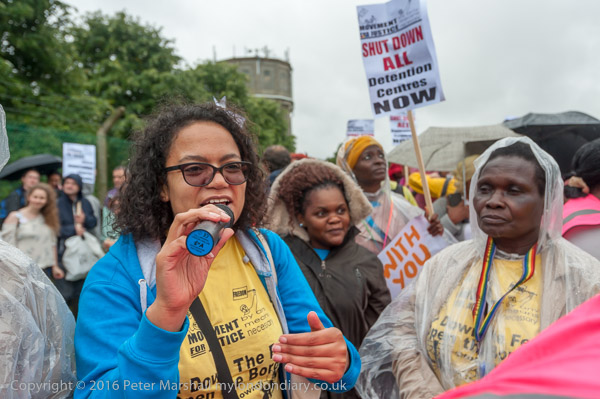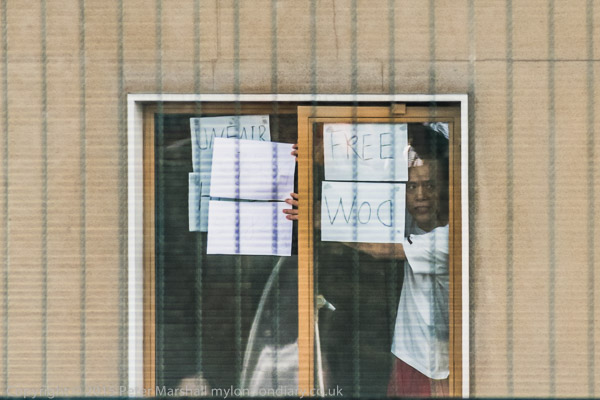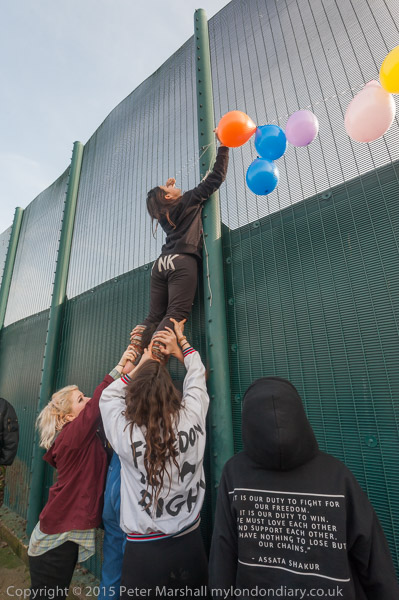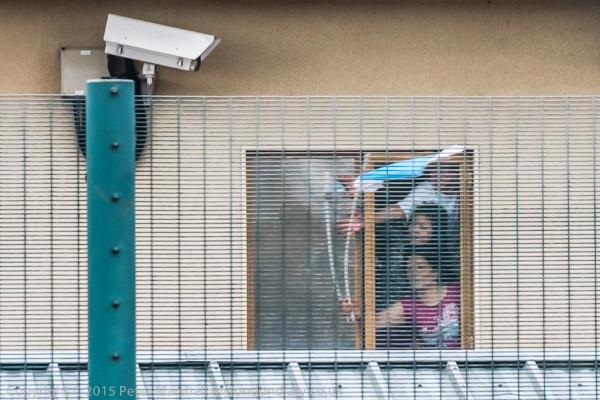Custody Deaths, Gurkhas & John Lewis: On Saturday 26th October I went to the annual procession to Downing Street by the United Families and Friends Campaign in memory of all those who have died in the custody of police or prison officers, in immigration detention or psychiatric hospitals. Sitting opposite Downing Street were Gurkhas on hunger strike demanding justice. I rushed away to join the IWGB protesting inside John Lewis’s flagship store in Oxford St demanding that the workers that clean John Lewis stores be paid a living wage and share in the benefits and profits enjoyed by other workers in the stores.
United Families & Friends Remember the Killed
Whitehall

Many from the families of people who have died in police custody, prisons, immigration detention or psychiatric hospitals had gathered in Trafalgar Square along with supporters for the annual procession calling for justice.

Although there have been several thousand who have died in the last twenty or thirty years, some clearly killed by police and others in highly suspicious circumstances, inquests and other investigations have failed to provide any justice. Instead there has been a long history of lies, failures to properly investigate, cover-ups, and perjury.

On My London Diary I quoted the description by the UFFC:
The United Families and Friends Campaign (UFFC) is a coalition of families and friends of those that have died in the custody of police and prison officers as well as those who are killed in immigration detention and secure psychiatric hospitals. It includes the families of Roger Sylvester, Leon Patterson, Rocky Bennett, Alton Manning, Christopher Alder, Brian Douglas, Joy Gardner, Aseta Simms, Ricky Bishop, Paul Jemmott, Harry Stanley, Glenn Howard, Mikey Powell, Jason McPherson, Lloyd Butler, Azelle Rodney, Sean Rigg, Habib Ullah, Olaseni Lewis, David Emmanuel (aka Smiley Culture), Kingsley Burrell, Demetre Fraser, Mark Duggan and Anthony Grainger to name but a few. Together we have built a network for collective action to end deaths in custody.

Among those holding the main banner as the march went at a funereal pace down Whitehall were Stephanie Lightfoot-Bennet, twin sister of Leon Patterson, murdered by Manchester police in 1992, Marcia Rigg, one of the sisters of Sean Rigg, killed by police in Brixton in 2008 and Carole Duggan, the aunt of Mark Duggan whose shooting by police sparked riots in August 2011.

At the rally opposite Downing Street many family members spoke in turn in a shameful exposition of injustice perpetrated by police, prison officers and mental health workers. You can read more and see most of them in the captions and pictures on My London Dairy at United Families & Friends Remember Killed.
Gurkhas Hunger Strike for Justice
Downing St

Gurkhas were sitting opposite Downing Stree on a serial hunger strike after failing to receive any action from Prime Minister David Cameron to their petition calling for fair treatment for elderly Gurkha veterans who are living in extreme poverty.

On 24th October 2013 they had begun a programme of nonviolent resistance (Satyagraha) with hunger strikes, at first with a “13 days relay hunger strike in the name of the 13 Ghurka VCs followed by a fast-unto-death.“
Gurkhas Hunger Strike for Justice
Cleaners Invade John Lewis Oxford Street

I met the cleaners and their supporters in the café on the top floor of John Lewis’s flagship store on Oxford Street for a protest by their union, the Independent Workers Union of Great Britain (IWGB.)

All the other people who work for John Lewis in their stores are directly employed by the John Lewis Partnership (JLP) and are ‘partners’ in the business with good conditions of service and decent pay, including an annual share in the company’s profits, which can amount to as much as an extra two months pay.
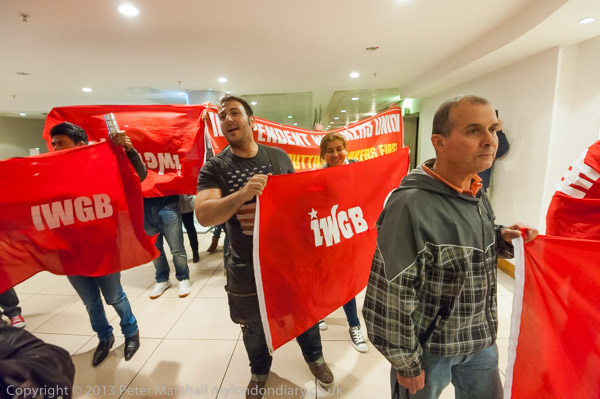
But JLP outsources the cleaning of its stores to a sub-contractor, who were paying them ‘poverty wages’, only around 80% of the London Living Wage, and employ them under far worse conditions of sickness, holidays and pensions than JLP staff.

By hiving off the cleaners to another company, JLP can still claim it is a ‘different sort of company’ with a strong ethical basis, but leave its cleaners – a vital part of its workforce – in poverty with minimal conditions of service.
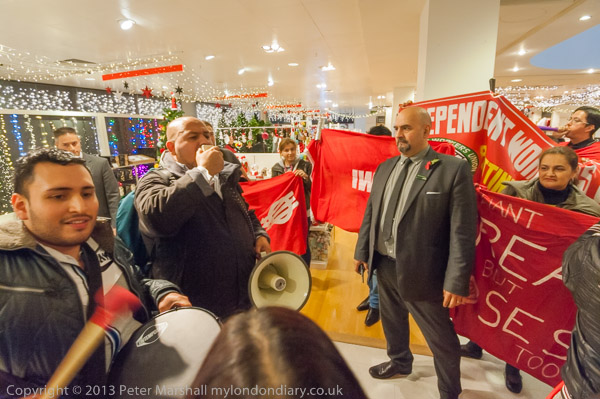
In 2013, the cleaning contractor was a part of the Compass Group which had recently declared pre-tax profits for the year of £575 million. And JLP had made £50 million profit from its department stores. Despite their huge profits both were happy to shaft the cleaners.
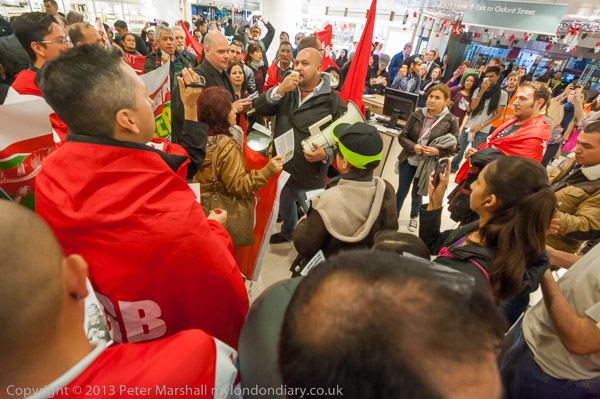
The cleaners were demanding to become employed by JLP, the owners of their workplace, and also to be paid the London Living Wage. JLP told them that this was not appropriate.

Among those taking part in the protest were members of the RMT and PCS trade unions and former John Lewis ‘partner’ Raph Ashley, who like many other partners had supported the cleaners’ claim. He was sacked after he gave a newspaper interview raising concerns about the ethnic diversity at John Lewis and was told that ‘partners’ discussing pay and urging them to join a trade union was a disciplinary offence. The protest also demanded justice for Raph.
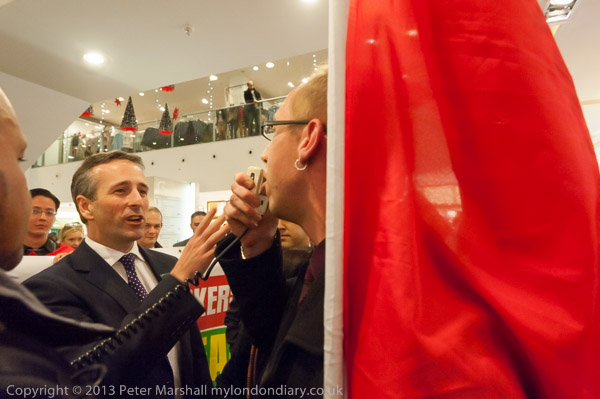
In the café the protesters got out banners, flags, flyers, drums, horns, whistles and a megaphone and walked noisily around the fifth floor before going down the escalator. At each floor they had to walk around to reach the down escalator, and stopped on the way to explain to the shoppers why they were protesting. Many customers took their leaflets and expressed their support for the cleaners, with some applauding the protest.

They continued down to the basement and then came back up to the ground floor where they held a short rally just inside the main entrance with short speeches from RMT Assistant General Secretary Steve Hedley, IWGB Secretary Chris Ford and Chris Baugh, Assistant General Secretary of PCS.

By then the police had arrived and they told the JLP managers to o ask the protesters to leave the store, and they did so, continuing their protest on the crowded street outside for another half hour.
More about the protest and many more pictures on My London Diary at Cleaners Invade John Lewis Oxford Street.
Flickr – Facebook – My London Diary – Hull Photos – Lea Valley – Paris
London’s Industrial Heritage – London Photos
All photographs on this page are copyright © Peter Marshall.
Contact me to buy prints or licence to reproduce.















